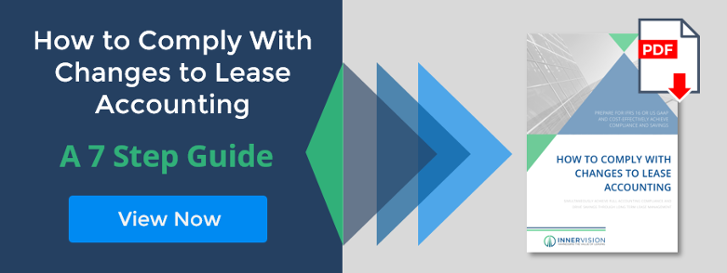Applying ASC 842: Practical Expedients and Exemptions
Updated 4th March 2025 | 8 min read Published 6th August 2020

Both FASB (Financial Accounting Standards Board) and IASB (International Accounting Standards Board) understood the enormity both from the perspective of effort and impact of the implementation of the new lease accounting standards – ASC 842 and IFRS 16.
The adoption of the new standards by entities in general but lessees, in particular, is seen as a very onerous task requiring significant resources, time and critical decision making that impacts an organisations ability to meet its compliance objectives. The boards have issued periodic updates to the respective standards and these Accounting Standards Updates (ASUs) to not only add clarity but importantly, to provide relief for preparers/lessees adopting the new standards through the announcement of amendments.
Created to simplify the transition to the new ‘leases standard’, the boards published certain reliefs in the form of “expedients and exemptions” which are individual measures, that can be taken or ignored. However, whilst designed as accounting reliefs, potential transitioners to ASC 842 should show caution in rushing to adopt them. The aim was that careful use of available expedients would reduce the effort and lessen the impact of implementing the standard. While generally shadowing each other, it is worth noting that the “low-value asset exemption” available under IFRS 16 is not offered under ASC 842.
The use of any expedients or exemptions will need to be disclosed in the financial statements but they may be appropriate, and benefits may accrue through their use. Electing to adopt them and correctly applying them may save your business time and resource as ASC 842 is implemented and compliance achieved.

Short Term Lease Exemption
Unlike the IFRS 16 definition which excludes leases with any purchase option, under GAAP, a more lenient interpretation of a short-term lease is defined as a lease that is 12 months or less without a purchase option that the lessee is likely to exercise. By adopting the “short-term lease exemption” a business can continue to treat any such lease as an operating lease under ASC 840 meaning there is no need to capitalize short-term leases and record the right-of-use (ROU) asset and associated liability on the balance sheet as per ASC 842. The obvious benefit is that this practical expedient will save time and resource in capitalizing leases, but lessees will still need to disclose them, and their value, in the footnotes of financial statements.Private Company Discount Rate Expedient
Offering a straightforward alternative to help resolve one of the more complex requirements of placing an operating lease on the balance, this expedient allows private companies to set the discount rate, if not known, as their risk-free interest rate in either of these two circumstances:- Rather than calculating the applicable incremental borrowing rate (IBR) or
- Where the lease contract has no implicit discount rate
Practical Expedient for Land Easements
While some companies will have accounted for land easements as intangible assets others may have accounted for the easements as leases. The complexity would increase where there were multiple land easements and so to simplify the accounting for them under the new standard this practical expedient gives companies, who previously did not account for them as leases, the option to not apply the new leases guidance to land easements that existed prior to the effective date of the new standard. Nevertheless, for land easements entered into or modified on or after the effective date, the new leases guidance regarding easements must be applied.Further Practical Expedients available under ASC 842
The expedients explained above are all individual and stand-alone in that a lessee can elect to use any or all of them. However, if opted for, this last set of expedients must be taken as a package. Applying to lessees and lessors alike, if this package is adopted, the real saving and tangible benefit is that there is no requirement to reassess the Initial Direct Costs of existing leases on adoption of ASC 842. The three expedients, which come as a package, all relate to leases that are extant at the adoption of ASC 842 –- Making the presumption that companies are already accounting for leases correctly under ASC 840, lease contracts do not have to be reassessed as to whether they contain a lease. This addresses the issue of “Embedded Leases”.
- Assuming there were no classification errors under ASC 840 then, under the second expedient, companies need not reclassify leases – if they were operating leases under ASC 840 they can remain operating leases under ASC 842. Likewise, existing capital leases remain capital leases though under ASC 842 they will now be referred to as “finance leases”.
- Previously under ASC 840, an entity could allocate the internal costs of acquiring a lease to Initial Direct Costs. Under ASC 842, Initial Direct Costs are now defined as costs that would not have incurred had a lease not been acquired – typically external costs. The third and final practical expedient in this package negates the requirement to reassess any Initial Direct Costs in existing leases – initial direct costs capitalized under ASC 840 also qualify to be capitalized under ASC 842. However, although under ASC 840 a company could allocate a portion of internal expenses — such as salaries for internal real estate staff — to initial direct costs, ASC 842 defines initial direct costs as costs incurred only because a lease contract was entered into, such as broker fees or external legal costs.
Hindsight Expedient Applied to ASC 842 Transition Requirements
Specifically for the periods that are being compared or restated, another practical expedient — hindsight — can be used either with the package of expedients described above or alone but if adopted it must be applied to all leases that are live during the comparative period and may, therefore, prove a drain on resources for a company with a large lease portfolio. It allows a company to consider when determining lease classifications, the actual impact of previously evaluated lease renewals, termination options, and purchase options. Hindsight can be used to –- Determine the lease term based on the likelihood of exercising lessee options to extend or terminate a lease or to purchase the underlying asset and
- Assess any impairment of right-of-use assets
Practical Expedient Combining Lease and Non-Lease Components
With ASC 842 transitioning and compliance, a company is set the task of evaluating any fixed consideration and allocating it across both the lease and non-lease components of each and every contract. Rather than set out on this onerous task this expedient allows a company to simply calculate the present value of the fixed payments without having to perform an allocation to the lease and non-lease components. Additionally, there is the flexibility to apply or not apply the expedient according to the class of underlying asset – it may prove sensible to apply the expedient to all real estate leases but not equipment leases, where the class of asset makes evaluating lease and non-lease components (such as maintenance) easier to determine. Flexible as this expedient is, it must be applied consistently across similar non-lease components.Practical Expedient for Restating Prior Year Financials
Under ASC 842, lessees adopting the new standard on January 1, 2020 need to recognize and measure any leases on their portfolio as of January 1, 2018 in their comparative financial statements. This practical expedient gives lessees the option to apply the new guidance at its effective date (in this case January 1, 2020) simplifying the transition requirements of the new leases standard by allowing a lessee to ignore not only any leases that expired prior to the effective date but also the effects of lease modifications during the comparative periods. Instead of raising comparative financial statements for prior years (here for 2018 & 2019) the company would recognize a cumulative adjustment in equity as of January 1, 2020.Take them or Leave them
While a practical expedient might save you time, companies are wise to consider the potential impact on financial reporting and while FASB has extended the compliance deadline for private companies until 2021 it is important to estimate not only the savings and benefits but also the impact on the balance of the ASC 842 practical expedients. Impact modeling is available and may be both relevant and desirable. Having a comprehensive understanding of the new standard and the various exemptions and practical expedients available will play a vital role when making considered business decisions when transitioning and applying ASC 842. When evaluating the practical expedients available, IRIS Lease Accounting strongly recommends and encourage preparers to engage with their auditors. If you’re looking for further guidance on how to effectively transition to the new standard or if you have any other questions around how it could impact your organization. Download our free guide, ‘The 7 Steps to Lease Accounting Compliance’. If you are interested in finding out how lease accounting software can help streamline and accelerate your ASC 842 compliance project, why not request a free demo and consultation today.
Disclaimer: this article contains general information about the new lease accounting standards only and should NOT be viewed in any way as professional advice or service. The Publisher will not be responsible for any losses or damages of any kind incurred by the reader whether directly or indirectly arising from the use of the information found within this article.




